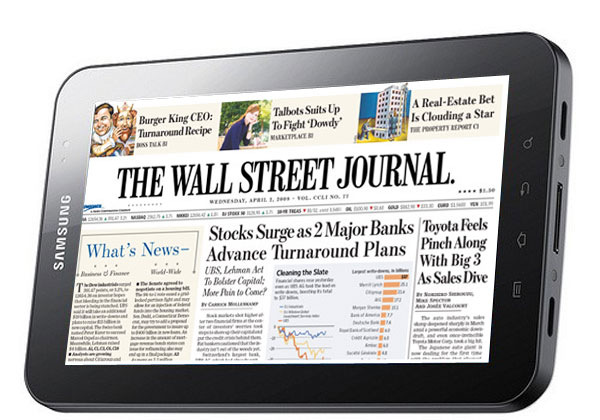Print media is dead, but lives on in tablets


Recently my fellow ZDnet columnist James Kendrick wrote about two newspapers from Philadelpha that were introducing a new plan to sell newspaper subscriptions in digital format along with a discounted tablet to read them.
I will forego the inevitable Android versus iPad debate on this topic; both tablets are perfectly suited for reading newspaper and magazine media in a convenient, portable format. For that matter, The RIM Playbook and HP TouchPad are also well-suited for the task. The truth of the matter is that so far, newspaper subscriptions have had a small amount of success on the mobile platform, but not very noteworthy. Digital magazine subscriptions have not been successful due to price, size and poor implementation.
The only problem is that the success of tablets is still tiny compared to overall computer and smartophone ownership. Most people still see the tablet as a novelty. All of my friends and peers in the tech industry have and enjoy using their tablets; but we're early adopters. Apple has sold millions of iPad devices, but that's still only scratching the surface of what is possible.
The Philly newspapers may have latched onto a method that might succeed in putting tablets into the minds of consumers where they weren't before. Until now, e-book readers like the Amazon Kindle and the Barnes & Noble Nook sold newspaper and magazine subscriptions within their online bookstores. But they didn't really focus on that capability. Magazines that are sold for the tablet market haven't had much success.
Newspaper publisher News Corp introduced a digital-only newspaper for the iPad called The Daily with much fanfare, to mixed reviews and mediocre success.
Newspapers have had web-based versions of their print mediums available online for over a decade now. News has been available in digital format for handheld devices since they existed, but they've always been relegated to a niche market for tech heads. The media is there. The customers simply aren't. And I suspect that it really boils down to mindset more than anything else.
By selling deeply discounted tablets along with the digital subscriptions, the newspaper publishers tie together the medium with the device in the mind of the customer. I stopped counting how many people telling me that they didn't have any need or reason to buy a tablet. They claim to be perfectly happy with just their laptop and/or smartphone. But let's be honest; how enjoyable is it to read an entire book, or even just a newspaper or magazine, on a device with a 4-inch screen? Or trying to hold a laptop like a newspaper?
Admittedly, smartphones have contributed to the decline of print news. But they are not the technological ideal. Tablets are slightly smaller than a standard magazine. They're the perfect size for that print medium in addition to books. The real difficulty in selling tablets has always been finding that one hook that will bring in the average consumer after the early adopters and tech heads have had their fill.
Older, less tech-savvy generations may very well find tablets like the Apple iPad and the Samsung Galaxy Tab and the HP TouchPad to be extremely useful for their needs. Lots of folks need a simple computing device for browsing and email. All they really need is that mental trigger that shows them how to do what they've been doing for years, on a device that's easier to use, cheaper and more portable than the computers that have frustrated them for decades.
The capabilities that attracted those of us to tablets simply aren't enough for the people that are not yet interested. Maybe it requires practically giving away the tablets subsidized by another service--like newspapers--to shift their viewpoint of tablets from "meh" to "Where can I get one?"